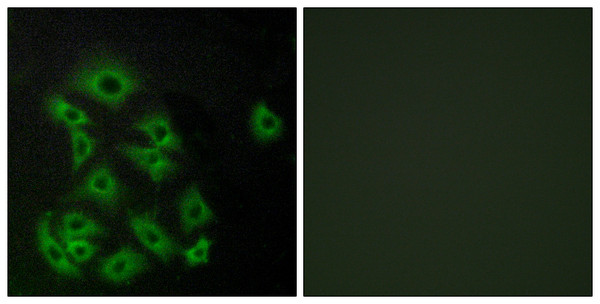| Post Translational Modifications | Phosphorylated on serine residues in the C-terminal cytoplasmic tail. |
| Function | Atypical chemokine receptor that controls chemokine levels and localization via high-affinity chemokine binding that is uncoupled from classic ligand-driven signal transduction cascades, resulting instead in chemokine sequestration, degradation, or transcytosis. Also known as interceptor (internalizing receptor) or chemokine-scavenging receptor or chemokine decoy receptor. Acts as a receptor for chemokines including CCL2, CCL3, CCL3L1, CCL4, CCL5, CCL7, CCL8, CCL11, CCL13, CCL17, CCL22, CCL23, CCL24, SCYA2/MCP-1, SCY3/MIP-1-alpha, SCYA5/RANTES and SCYA7/MCP-3. Upon active ligand stimulation, activates a beta-arrestin 1 (ARRB1)-dependent, G protein-independent signaling pathway that results in the phosphorylation of the actin-binding protein cofilin (CFL1) through a RAC1-PAK1-LIMK1 signaling pathway. Activation of this pathway results in up-regulation of ACKR2 from endosomal compartment to cell membrane, increasing its efficiency in chemokine uptake and degradation. By scavenging chemokines in tissues, on the surfaces of lymphatic vessels, and in placenta, plays an essential role in the resolution (termination) of the inflammatory response and in the regulation of adaptive immune responses. Plays a major role in the immune silencing of macrophages during the resolution of inflammation. Acts as a regulator of inflammatory leukocyte interactions with lymphatic endothelial cells (LECs) and is required for immature/mature dendritic cells discrimination by LECs. |
| Protein Name | Atypical Chemokine Receptor 2C-C Chemokine Receptor D6Chemokine Receptor Ccr-10Chemokine Receptor Ccr-9Chemokine-Binding Protein 2Chemokine-Binding Protein D6 |
| Database Links | Reactome: R-HSA-380108 |
| Cellular Localisation | Early EndosomeRecycling EndosomeCell MembraneMulti-Pass Membrane ProteinPredominantly Localizes To Endocytic VesiclesAnd Upon Stimulation By The Ligand Is Internalized Via Clathrin-Coated PitsOnce InternalizedThe Ligand Dissociates From The ReceptorAnd Is Targeted To Degradation While The Receptor Is Recycled Back To The Cell Membrane |
| Alternative Antibody Names | Anti-Atypical Chemokine Receptor 2 antibodyAnti-C-C Chemokine Receptor D6 antibodyAnti-Chemokine Receptor Ccr-10 antibodyAnti-Chemokine Receptor Ccr-9 antibodyAnti-Chemokine-Binding Protein 2 antibodyAnti-Chemokine-Binding Protein D6 antibodyAnti-ACKR2 antibodyAnti-CCBP2 antibodyAnti-CCR10 antibodyAnti-CMKBR9 antibodyAnti-D6 antibody |
Information sourced from Uniprot.org









